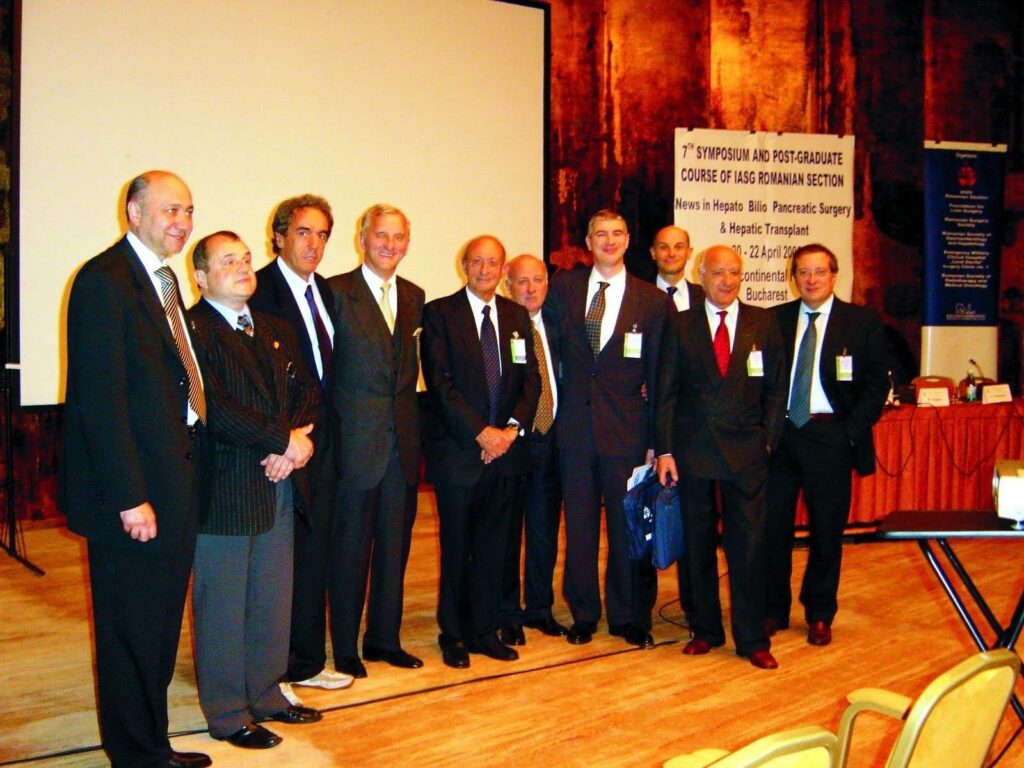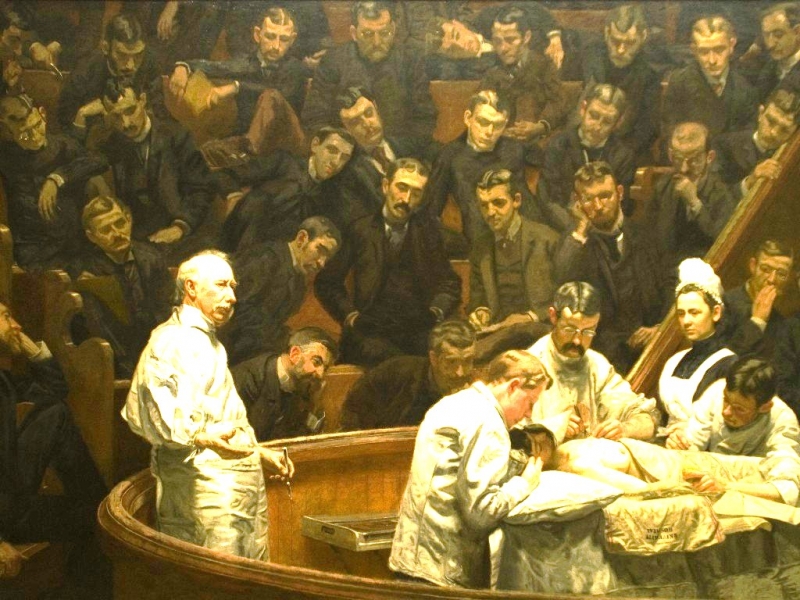History of ARCHBPTH
One of the consequences of the development of modern medicine is the emergence of specialities. The “specialist” is the one who knows more and more about fewer and fewer things. Could we consider such a trend as natural and beneficial? Of course we could! First, because nobody can cover any longer the whole amount of knowledge in very large areas, such as “internal medicine” or “general surgery”. Second, as those who choose a certain speciality area will perform at a much higher level. The main beneficiaries will be the patients who will be treated more comprehensively and efficiently. Thus, in a series of national health systems (e.g. USA, Italy, France, the Nordic States) the digestive surgery speciality has been implemented (also called gastroenterological, gastrointestinal or colorectal, depending on the country), a speciality also including the surgical interventions in the hepato-bilio-pancreatic sphere – HBP). Moreover, in some of these countries this speciality is the only that certifies the surgeon’s capacity to perform this kind of operations.
HBP surgery has now become a branch of surgery acknowledged world-wide, both in the USA and in Europe and Asia, bringing together the surgery of the liver, of the extrahepatic biliary ducts and of the pancreas, by addressing a pathology of the hepato-bilio-pancreatic complex of the oncological type and not only, multivalent and with increased occurrence at both national and international level.
The 7th Symposium and Postgraduate Course of the Romanian Section of the I.A.S.G. (International Association Of Surgeons And Gastroenterologists)
Between April 20-22, 2005, the Intercontinental Hotel in Bucharest hosted the 7th Symposium and Postgraduate Course of the Romanian Section of IASG (International Association of Surgeons and Gastroenterologists).
An important moment in the symposium was the establishment of the “Association of Hepato-Bilio-Pancreatic Surgery and Liver Transplantation”, on the initiative of over 50 founding members. The association, with Prof. Dr. Henri Bismuth as Honorary President, aims to permanently improve the results in the surgery of hepato-bilio-pancreatic diseases and liver transplantation, based on the expansion and deepening of forms of cooperation between hepatologists, surgeons, anesthetists and other specialists in the field. The Board of Directors of the association includes Prof. Dr. Irinel Popescu (President), Prof. Dr. Constantin Copotoiu, Prof. Dr. Liviu Vlad, Prof. Dr. Doru Bordos, Prof. Dr. Ion Georgescu, Prof. Dr. Ionel Câmpeanu, Prof. Dr. Eugen Burcoveanu, Prof. Dr. Vasile Sârbu (vice-presidents), Head of Works Dr. Silviu Ciurea (general secretary).

In photo: Prof. Irinel Popescu, Prof. Dan Sabau, Prof. Antonio Rampoldi, Prof. Cristoph Broelsch, Prof. Henri Bismuth, Conf. Mihnea Ionescu, Prof. Massimo Malago, Prof. Andrea de Gasperi, Prof. Domenico Forti, Prof. Luciano de Carlis
To date, HBP surgery has been a sub-speciality of general surgery, the training length being 2 years, both in Europe and the US, after the residency. The two years of training are followed by an exam which, at European level, is organized by the European Union of Medical Specialists (UEMS) – the HBP Surgery Division. Once the exam is passed, a Diploma certifying HBP specialization is granted; based on it, this type of surgery can be practiced in dedicated institutions.
Since 2013, the “Dan Setlacec” Center of General Surgery and Liver Transplant of the Fundeni Clinical Institute has trained series of over 30 course-members from all over Romania in “HBP Surgery” (a certification also covering liver transplant). Therefore, more than ever the ARCHBPTH activity should be continued and increased, as an association meant to contribute significantly to the development of this surgical speciality in our country.
In this context, HBP surgery is one of those branches of general surgery becoming increasingly better defined as a stand-alone speciality. A strong argument in this respect is the foundation of a HBP Surgery Division within the UEMS, which organizes an exam every year to get a European diploma.
At present, it is a fact that HBP surgery has not separated completely from the general surgery, and, at international level, there are compartments of HBP surgery within general surgery services rather than stand-alone ones. The latter emerged not because of an imposed administrative reorganization, but naturally, as a consequence of the emerging need for a separate branch of surgery, on the one hand caused by the progressive, say alarming, growth of the HBP-related oncological pathology, and, on the other, by the increased complexity of the related surgical interventions. Moreover, this complexity triggered the development of dedicated technologies, such as the intraoperative ultrasound probes, the ultrasound scalpel, the virtual intraoperative navigation systems, etc. In addition, the multidisciplinary approach to this pathology, involving many disciplines such as medical imaging, interventional radiology, oncology, gastroenterology, anesthesiology intensive therapy, etc. – in their turn with HBP supra-specialities, is another argument in favour of a separate identity for HBP surgery.
For the time being, there are still some issues to clarify:
To what extent the three components, i.e., liver, bile ducts and pancreas will still group together, considering the fact that in many surgical services the liver and pancreatic surgical teams are separate?
Where is the place of liver transplant which, at present, is only marginally included in the UEMS training curriculum for HBP surgeons (where is there a separate “transplant” division)?
Which will be the relation between the HBP surgery and the general surgery in the future?
Professor Irinel Popescu, MD
The History of Liver Transplant in Romania
The first experimental liver transplant in our country was performed by Vladimir Fluture in Timișoara and Sergiu Duca in Cluj. Dumitru Popescu-Fălticeni performed conservation studies in animals, at the Floreasca Emergency Hospital in Bucharest. In the Fundeni Surgical Clinic, the interest in this procedure started in the 80’s, when, on the advice of Professor Dan Setlacec, Irinel Popescu started to perform experimental surgery in order to acquire the related technique. The first liver transplant in Romania to a human was performed by the team led by Irinel Popescu on June, 21st, 1997, but the patient died during the postoperative stage [54]. Until 2000, another three transplant operations were performed [51], but the patients did not survive either.
The first transplant followed by patient survival was performed on April, 15th, 2000 [55], by the same team, in which dr. A Slim, a fellow worker of Professor Domenico Forti of the Niguardia Hospital in Milan also participated. The patient suffered from liver cirrhosis caused by B virus hepatitis. The patient is still alive more than 14 years after surgery, in very good condition. In the autumn of 2000, the first transplant from a living donor (mother-to-daughter) was performed, recommended by liver atresia. The operation was led by Professor Cristoph Broelsch from the University of Essen [52].
Later on, the whole liver surgery from dead donor was performed uniquely by the team led by Irinel Popescu, whereas for the operations from living donor, both to children and adults, the cooperation with Professor Broelsch and dr. Massimo Malago continued for several years. In 2001, the Fundeni team successfully performed the first “domino” transplant in Romania to a patient with familial hypercholesterolemia [56]. After 2006, cooperation with Professor S.G. Lee from Seoul started, where several members of the Fundeni Center of General Surgery and Liver Transplant specialized in liver transplant from living donor. As a consequence of the technical improvements brought to the liver transplant procedure with adult right hemi liver, the number of such operations increased and the results improved. In 2011, for the first time in Romania, transplant of a liver divided for two adults and dual transplant from two living donors were performed. Between 2000-2006, the number of transplant operations did not exceed 20 procedures per year.
Starting from 2007, as a consequence of the creation of the Transplant National Agency, the number of these operations has increased, so that [57] it amounted to 624 at the end of 2014, year in which at the Fundeni Clinical Institute 105 transplants were performed, 15 of which from living donor. The same year, a new liver transplant center is set up in „Sfânta Maria” Hospital of Bucharest. In this way, the total number of transplants in 2014 was 122. Additionally, in 2016 a regional liver transplant center was founded in Iași, in „Sfântul Spiridon” Hospital.

